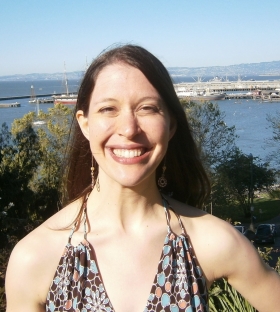This post was authored by Samantha Harvey, Program Manager at the Overbrook Foundation.
Throughout my four years at The Overbrook Foundation, I’ve often heard colleagues describe philanthropy as “more of an art than a science.” My first career was in the arts – modern dance – and when making a dance, two minutes of material can take two weeks to generate. Collaboration is key; the end product is a mixture of visions and vocabularies. And often a finished piece is very different, but much better than what was originally imagined.
So if this philanthropy stuff is “art” why do we seem to stay more or less within our own circles? Why are we so concerned with metrics, grant cycles and deliverables, and who’s defining what it means to “win” anyway?
In an April post for this blog, HEFN Director Kathy Sessions wrote, “Environmental philanthropy as a whole has…held too narrow a view of what power matters, too limited a view of who has power, and too short-sighted a view of whose power is worth building.” Kathy’s sentiment reflects a need for change throughout the field.
Yet change is not happening fast enough, or at a large enough scale. As Sarah Hansen reported in a National Committee for Responsive Philanthropy paper “Cultivating the Grassroots,” just two percent of the most resourced environmental groups in the U.S. get 50 percent of the funding. This is a call to action for funders to take a hard look at the power dynamics we help perpetuate.
Last July, Overbrook and partners launched a process to address historic rifts and strategize authentic collaborations among grassroots, “big green” groups and philanthropy. The meeting, hosted by the Johnson Foundation at Wingspread, followed the Jemez Principles and worked off the equation “Equity + Alignment = Impact.” In other words, grassroots organizations must be able to expand and contribute their base-building capacity in a meaningful way (equity) and various parts of the movement must be working with a common strategy and purpose (alignment). We believe that equity and alignment together will increase impact, building a broader, stronger progressive movement that looks like the country it serves rather than the few who hold the purse strings.
Building Equity and Alignment Meeting Participants at the Wingspread meeting convened as part of Overbrook’s Building Equity and Alignment (BEA) Initiative. Once assembled, the group led the process, sharing stories and building narratives to strategize from a place of deep understanding and respect. To address inequity from the outset, Overbrook supported every grassroots representative with travel and work stipends. It was just one small way to start “walking our talk” as a foundation. The meeting produced a collaboratively-written Vision Statement and a strategy for new workgroups to tackle tasks toward achieving equitable collaborations and resource-shifts to the grassroots.
As funders, we are seeing how authentic partnerships help all sectors soar. It is now our task to build an allied funders group to accompany the BEA Initiative. Although still in development, this group could work together to shift harmful inequities, building broad support for a bottom-up approach. More tangibly, the allied funders group could also result in a community-advised, pooled fund to increase resources for movement-building and the grassroots organizing sector.
Imagine how much more impactful the entire movement could be if equity and alignment underpinned everything we did. We must acknowledge what years of experience have shown. Power and innovation is coming not from the top-down, but from lower-income communities and communities of color, rooted in and accountable to the communities they serve. And finally, we must relax our grip on grantee metrics and deliverables, understanding the end result can be better than what was originally imagined.
It’s easier said than done, but definitely a lot more transformational. Let’s bring the art back to philanthropy. Let’s dance!
Samantha Harvey is Program Manager for the BEA Initiative. The Overbrook-based initiative looks at tools the U.S. environmental movement can use to increase equity and alignment among grassroots, mainstream green groups and philanthropy, shifting resources to the grassroots and strengthening the entire movement in the process.


